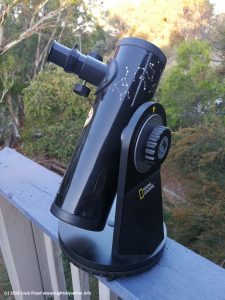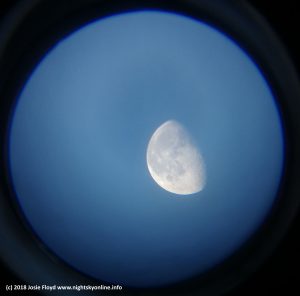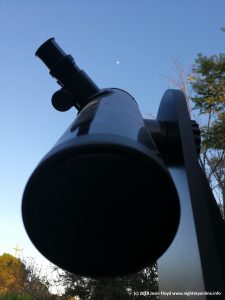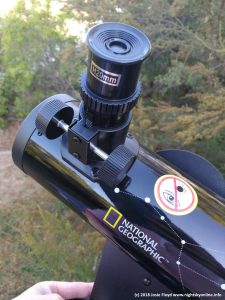One of the most common questions I get asked is “What telescope can I buy for my child that costs less than $200?” The answer to this question is applicable both if you are a parent or a teacher looking for a loan telescope to send home for your students to use.
In providing an answer to the question, I am going to assume that you are looking for a telescope that:
- Is easy to use;
- Actually works (the view you get through the telescope is clear);
- Won’t fall apart easily; and
- Is suitable for a primary school age student to use (it is not too big).
The telescope this brief review is about ticks all the above boxes, and at the time I purchased it, sold for a mere $49.99. Aldi usually has these telescopes available as a special purchase item either one or two times a year. Similar telescopes are available from online telescope retailers at a slightly higher cost. As an aside, I looked on the importers website and couldn’t find it there. They do however sell what looks like the same telescope but on a different mount for $59.99 (which also includes some other goodies).
What can you see with this telescope? You can easily see larger craters on the Moon. The above photo was taken simply by pointing my phone’s camera at the eyepiece of the telescope (this technique is called afocal photography). Some larger craters on the Moon are easily visible.
The above image is of a land based target. You will note that both images are upside down. Newtonian telescopes produce an image that is upside down
One downside of the price is that it doesn’t include a finder scope. Essentially, a finder scope is a very wide angle small telescope which looks at a larger area of the sky. However, this telescope already has a wide field of view, meaning you don’t really need one. All you do is point the telescope approximately in the direction of the object you are looking for. Then look along the top of the telescope tube and move it appropriately so that the object you are looking for seems to be ‘touching’ the top of the telescope tube. With a bit of practice, you will then be able to look into the eyepiece of the telescope and see the object you are looking for. If it isn’t in the centre of the eyepiece field of view, then you just gently but firmly slowly move the telescope tube so that it is. You will discover that (thanks to how the Newtonian optics work) you will need to move the telescope tube in the opposite direction.
I did want to point out the warning sticker on the telescope tube (see above image). Under no circumstance, would I leave your child using this telescope unsupervised on a bright sunny day. A child’s natural curiosity is to point the telescope at something bright i.e. the Sun. That will end in tears and permanent eye damage.
To conclude, this telescope is worth buying as a first telescope. You get a wide field telescope on a sturdy mount which is easy for a child to use. Yes, your child will quickly grow out of it, but that is actually a plus. They will either get hooked on astronomy or bird/nature watching or it will put them off these activities. This will be because their interests have moved on (as is their right). It won’t be because the telescope was hard to use or because the mount wobbled too much.




